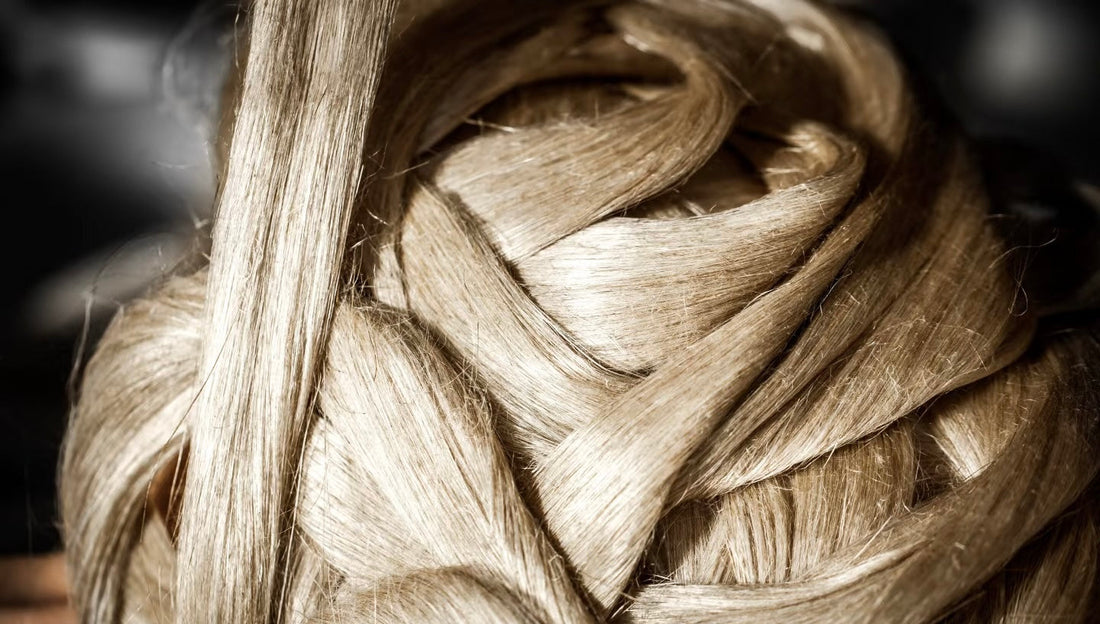
What Is Weed Fabric? The Ancient Textile Making a Sustainable Comeback
What Is Weed Fabric?
Weed fabric, commonly known as hemp fabric, is made from the stalks of the Cannabis sativa plant.
While "weed" is often associated with its psychoactive cousin, the plant used for fabric is a non-intoxicating industrial variety with less than 0.3% THC.
Hemp is one of the oldest cultivated plants in human history and is now being rediscovered as a sustainable material for modern fashion.

When Did Humans Start Using Weed Fabric?
Archaeological discoveries have traced the use of hemp back over 8,000 years to the Neolithic period. In northern China, pottery shards with imprints of hemp fibers indicate early use for rope and cloth.
Hemp was one of the first plants to be spun into usable fiber, predating cotton by thousands of years. Ancient Chinese texts like The Book of Rites documented how hemp was processed into fabric through retting and beating.
The Special Properties of Weed Fabric
Weed fabric is not just a nostalgic or ecological novelty—it’s a high-performance material:
- Breathable & Thermoregulating: It keeps you cool in summer and warm in winter.
- Moisture-wicking: Hemp quickly draws sweat away from the skin.
- Naturally Antibacterial: Thanks to its phenolic compounds.
- Durable: Tensile strength up to 1100 MPa—stronger than flax and cotton.
- Biodegradable: Fully decomposes in compost, leaving no toxic residues.
Wearing weed fabric feels earthy but soft, often with a linen-like texture. Over time, it becomes more comfortable, adapting to the wearer’s body and movements.
Is It the Same as Smoking Weed?
Technically, yes—it’s the same species (Cannabis sativa), but not the same product.

- Industrial Hemp (used for fabric): Very low THC (<0.3%), long stalks, grown for fiber and seeds.
- Marijuana (used for smoking): High THC (5–30%), bushy plants, grown for psychoactive flowers.
Different cultivars of Cannabis sativa have been selectively bred for vastly different uses. Industrial hemp is legal in many countries and has no psychoactive effects.
What Are the Different Types of Weed Fabric?
Weed fabric can vary based on processing and blend:
- 100% Hemp: Strongest and most eco-friendly; often used in outerwear and accessories.
- Hemp-Cotton Blends: Softer and easier to care for; great for T-shirts and casualwear.
- Hemp-Silk Blends: Luxurious texture; used in high-end fashion and eveningwear.
- Hemp-Denim: A modern twist on classic jeans with reduced water footprint.
What Does Weed Fabric Look Like in Fashion Today?

Weed fabric has transcended its rustic roots to enter the world of luxury fashion:
- Louis Vuitton’s 2024 Spring/Summer collection featured hemp evening dresses with high couture tailoring.
- Bottega Veneta offers hemp knitwear with minimalist cuts priced over $2,000.
- Eco-conscious streetwear brands use hemp-cotton blends for everyday staples.
At the same time, hemp textiles are being used for uniforms, accessories, home furnishings, and even biodegradable composites in automotive interiors.
Want to explore how to incorporate sustainable materials into your own creations? Check out our How-to Guides for fabric tips, cutting guides, and more.
The Positive: Weed Fabric as a Sustainable Savior
- Low Water Use: Uses 20x less water than cotton.
- Fast Growth: Matures in 3–4 months; excellent for crop rotation.
- Carbon Capture: Absorbs 15 tons of CO₂ per hectare.
- No Pesticides Needed: Naturally resistant to pests.
These attributes make it a favorite for eco-designers aiming to reduce fashion’s environmental footprint.
The Negative: Greenwashing & Processing Pollution
Despite its advantages, weed fabric is not automatically “clean”:
- Traditional retting (soaking) creates water pollution with high COD (chemical oxygen demand).
- Land Displacement: High-end hemp farms may displace food crops or wine vineyards.
- Luxury Co-optation: Big brands may use hemp to appear green without changing supply chains.
As with any sustainable material, context and accountability matter. Hemp can be part of the solution—but only if processed responsibly and equitably.
Final Thoughts: What Weed Fabric Tells Us About Civilization
Weed fabric is more than just a material—it’s a symbol of shifting human values. From ancient textiles to banned substance, from prison uniforms to luxury dresses, its evolution reflects the tensions between nature and industry, tradition and innovation, rebellion and branding.
As we move toward a post-petroleum era, hemp may offer not just an ecological alternative—but a cultural rethink of how we relate to what we wear.
